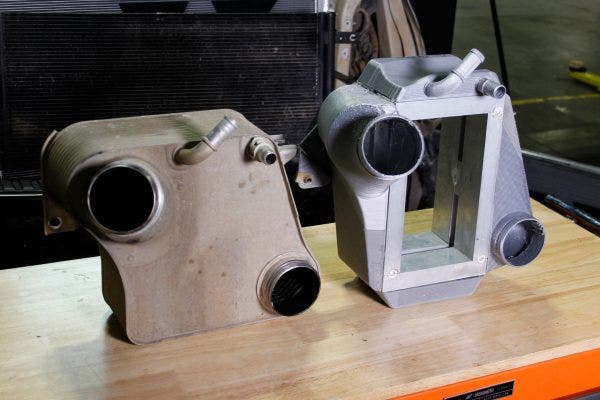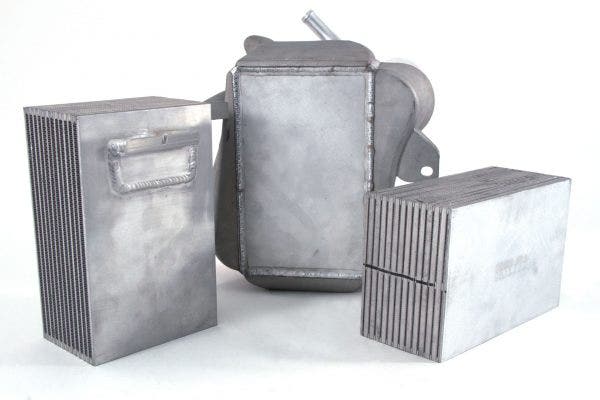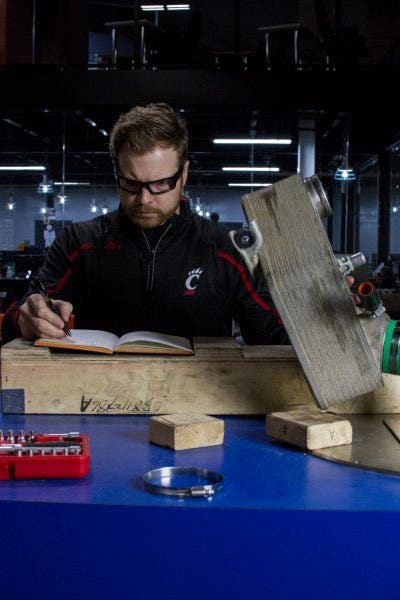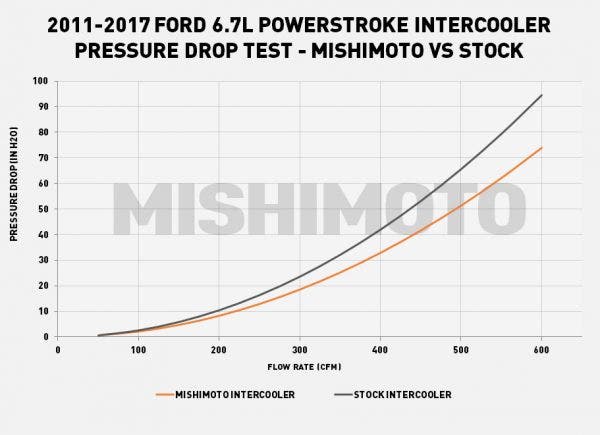
Old Dog, New Tricks - Intercooler R&D, Part 3: Flow Bench
Intercooler design is a delicate balance of pressure and flow. Too much flow means that the charge air does not stay in the core long enough to transfer heat. Too little flow, and too much pressure, means all the work your turbo or supercharger has been doing is wasted on forcing the air through the cooler instead of into the cylinders. Heat transfer happens rapidly inside an intercooler, so it's difficult to make an intercooler core that has good flow. That doesn't mean we could use just any core in our 2011-2017 6.7L Powerstroke intercooler. Like all our products, this intercooler needed to be extensively tested before it finds its way into our customers' trucks.
In our last post, we looked at our prototype with its 3D-printed end tanks and aluminum bar core. In this post, we'll test real cores with production end tanks to get the most accurate results.

After a few weeks of casting and making small tweaks to the designs of the four end tanks, we had a design that our engineer was happy with. With the end tanks cast, we needed a core to go between them. This is where our testing would become vital. Because this intercooler is an air-to-water cooler, our engineer was essentially developing two cores. Water and air are both considered fluids in physics , but they behave very differently as they move through a space. They also transfer heat differently. This meant that the design for the air side of the core needed to be different than the water side of the core.
The effectiveness of an intercooler core depends on an array of factors. The arrangement of cooling fins, the height of the tubes, core dimensions, and path the fluid takes, all play major roles. For each core, these factors are multiplied by two - once for the fluid to be cooled and once for the fluid receiving that heat.

In an air-to-air cooler, these two sides can be the same or at least very similar. In an air-to-water cooler, much like a radiator, each must be treated with its specific fluid in mind. Unlike radiator development, this intercooler would require striking that balance of flow and pressure on both sides of the core. For the charge-air side, we turned to our flow bench to find the best flowing core features. We welded our cast end tanks to our core candidates and got to work on the flow bench. After testing multiple variations of fins and tubes, we compared the data between them and the stock cooler.
Before we look at the results, we should talk about how the flow bench works and how flow is calculated. But even before that, we must explain one important concept: pressure is the measure of restriction and flow is the lack of pressure. If you blow into open air, it's easy and you can flow as much air as your body can produce. If you try to blow through a tiny straw at the same rate, you've introduced a restriction in flow and increased the amount of pressure required to flow the same amount of air.

A flow bench test factors in two main values: pressure and flow rate (measured in cubic-feet per minute, or CFM). Even though we're looking for the best flowing core, we're not just looking at the CFM figures. What really matters in flow bench testing is the pressure drop across the part at a pre-set CFM. Inside the flow bench is essentially a powerful vacuum that draws air in at known rates of flow. The machine then measures the amount of pressure needed to pull that much air through the part. With that pressure, we can calculate the pressure drop across the core and thus how restrictive the core is.
A lower drop in pressure across the core indicates that less pressure is needed to move air at that flow-rate. A lower pressure drop, at the same or higher CFM, indicates a freer flowing core. So how did our best core compare to the stock core?

At 600 CFM, our best core showed a 22% lower pressure drop than the stock cooler. Put simply, our core flows 22% better than the stock cooler. That extra flow will let your 6.7L Powerstroke pull in more air, inject more fuel, and make more power. With flow bench testing complete, we'll soon have a production sample to fit in the truck and soon after that a pre-sale so that you can have one in yours too. Keep an eye out for the next update on this project and feel free to let us know what you think.
Thanks for reading!
-Steve












